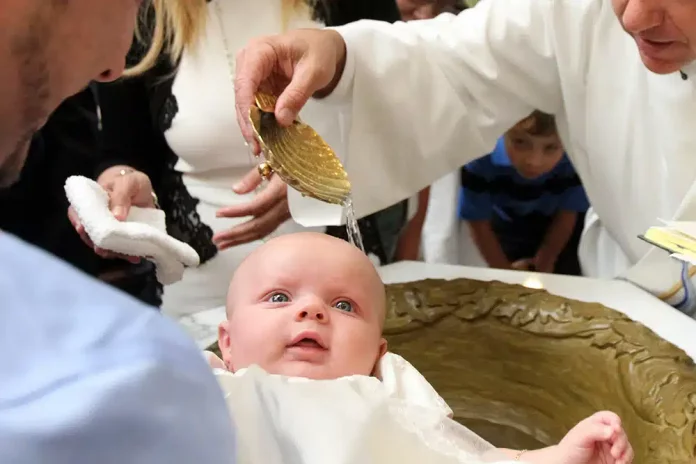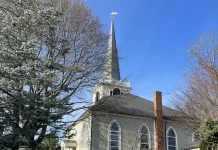Release of Episcopal Church statistics earlier this month hit hard: the worst-ever year-over-year drop in membership (down 88,306 persons, or 6 percent), while attendance saw a middling (19 percent) rebound from COVID-era lows. Access my report on those numbers here.
Attendance and membership are lagging indicators that tell us where the church has already been. Baptisms, confirmations and marriages can serve as leading indicators, giving a better sense of where the Episcopal Church is headed in the next 20 years. These figures paint a dire picture of a denomination that will see its decline accelerate and its ministry presence conclude in many communities.
Frank Assessments
Consider what the denomination’s top officials now openly acknowledge:
“Our context demands that we must help the church to face and engage the reality of decline,” Presiding Bishop Michael Curry candidly told the Episcopal Church Council of Bishops meeting virtually September 19 in his opening remarks. “This is not easy. The times are not easy.”
The numbers were unsurprising. In June, the Episcopal Church’s highest ranking lay officer, House of Deputies President Julia Ayala Harris, effectively signaled what was coming in opening remarks before the denomination’s Executive Council meeting in Providence, Rhode Island.
“At the churchwide level, we sometimes talk a little too much about numbers, numbers of people in the pews, and not enough about the fruit of our ministries,” Harris suggested, telegraphing that the numbers would indeed be horrid. “We worry about the dreaded ‘D’ word—decline—as though finishing the work that Jesus left for us to do on Earth was measured in Average Sunday Attendance or by the available funds in the parish bank account.”
But, as Harris acknowledged, “these things are important” and merit discussion especially in a governance context like the Executive Council.
For historical context, revisit 2011, when Episcopal Diocese of Washington Bishop Mariann Budde was among the very few bishops candidly assessing where most Episcopal parishes were headed. This was the same time period in which high profile bishops like Gene Robinson deluded themselves with fanciful dreams of liberal Roman Catholics converting en masse, lining up for Episcopal same-sex marriage rites.
Baptism, Marriage and Confirmation
Episcopalians reported 19,716 children and 3,866 adults baptized in 2019, the last full year before COVID restrictions. By 2021, the church reported 14,714 children and 2,136 adults baptized, rebounding slightly to 15,272 children and 2,147 adults in 2022, a 23 percent decline for children and a staggering 45 percent decline in adult baptisms in only three years.
Marriage rates tanked, despite new rites available to same-sex couples. In 2019 6,484 marriages were solemnized, dropping to 4,592 in 2021 and partly rebounding to 5,562 in 2022, a decline of 15 percent across the three year period. For context, there were 10,394 marriages solemnized in 2013, a drop of 47 percent in less than 10 years.
Confirmation numbers also tumbled. In 2019, 6,857 children and 8,737 adults were confirmed across the Episcopal Church. By 2021 those numbers dropped to 4,805 children and 5,657 adults, rising again to 5,473 children and 6,648 adults in 2022, a loss of 20 percent and 24 percent, respectively, across the three year period.
While many Episcopal churches reopened to in-person worship services later than Roman Catholic, Evangelical or Pentecostal churches, almost all were fully open throughout 2022, the most recent reporting year.
Optimists might protest that Episcopalians are still in the process of returning to church, but let me disabuse readers of that notion: they’ve transferred to another church that reopened earlier, traded weekly church attendance for some combination of yoga and/or brunch, or are deceased. If they failed to return to the pews in 2022, these Episcopalians are now gone.
Burials and Receptions
Speaking of the deceased, burials conducted within the Episcopal Church are among the more stable numbers. In 2019 there were 26,667 burials, dropping to 23,741 in 2021 and again ticking upward to 25,905 in 2022. At a mere 3 percent rate of decline, the death rate within the Episcopal Church is mild compared to almost any other tracked metric. Far more people are walking out the door alive than those exiting via graveside interment.
New church members are no longer being received in the same numbers from other liturgical traditions like Catholicism or Lutheranism. In 2019, 6,876 new Episcopalians were received, dropping to 3,649 in 2021 and, again, partly rebounding to 4,106 in 2022, a decline of more than 40 percent. There no longer appears to be a significant pipeline of new members.
Oddly, Harris greeted survey data in June with a declaration that “one of the major themes that has emerged from the data that is a significant marker of health is literally the feeling of pride in congregational identity. Pride in what we accomplish together, not the size of the congregation.”
For his part, Curry took a posture of humility when addressing the Council of Bishops this month:
“We need God, and we need each other.”
Data in this report is taken from the Table of Statistics of the Episcopal Church drawn from 2022 and earlier Parochial Reports. Source: The Office of the General Convention as of September 2023. Access those reports in full here.



